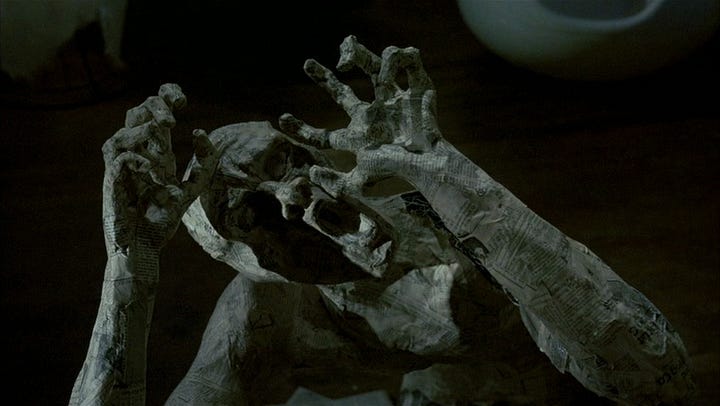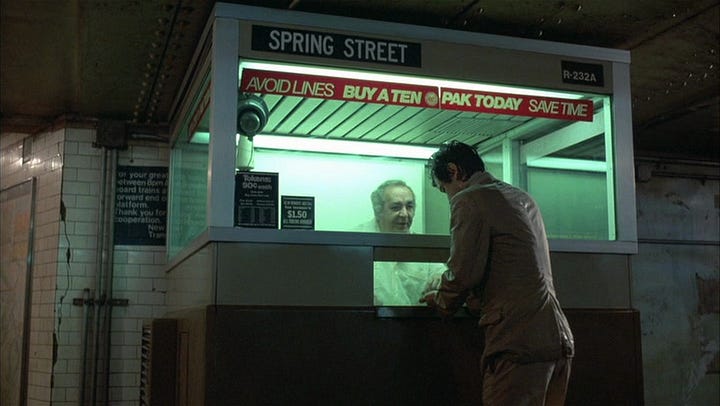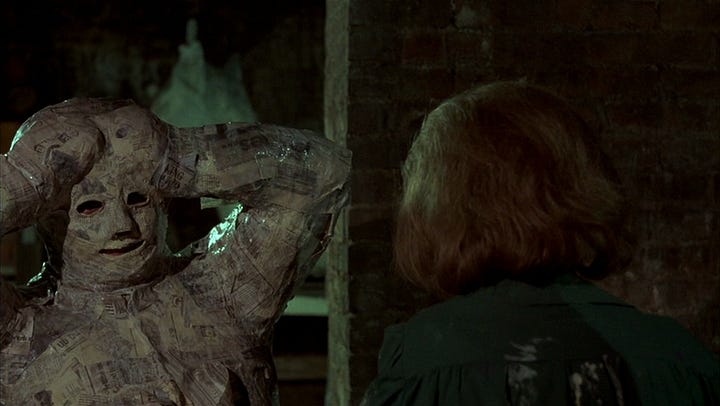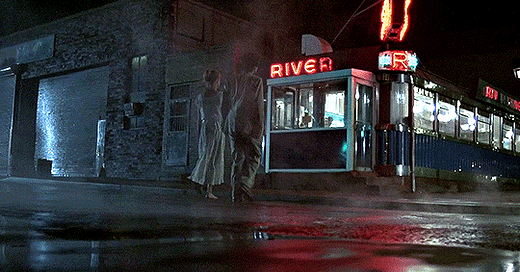After Hours (97 minutes)
"Sure. What the hell. Different rules apply when it get's this late. You know what I mean? It's like after hours."
Welcome back to The 90-Minute Movie, the only Substack (that I know of) dedicated to movies of a certain runtime (short). There’s nothing better than knowing that a movie isn’t going to completely derail your day. I mean seriously, the idea of walking to the theater, sitting through previews and then the actual 3.5 hour long movie, and then walking back home gives me anxiety. That’s nearly five hours of my life! Not to mention that’s like 3 bathroom trips for me… There’s a charm to the theater and movie theater popcorn, but please, I don’t want to be there all day… If you agree with any of these sentiments than subscribing would be a good idea:
Now, I know when I say “that movie is too long” you know exactly who I’m talking about: Mr. Marty Scorsese. His last four films average a runtime of about 3 hours, and in some news outlets the runtimes were talked about more than the movies themselves. He’s become very well known for a long winded tale. And like, good for him I guess. He’s sort of like a grandfather that tells amazing stories but you just know that once you’re at his place you’re not getting home before dark. Though that is his reputation now, there was a time when Scorsese made shorter films (le gasp!), and in fact he made one of my favorite 90-minute movies of all time: 1985’s After Hours (97 minutes).
These days, After Hours is quite beloved in film circles and most Scorsese buffs will admit it is one of his best, even if that wasn’t the case for a very long time. Partially because it was set aside during the 90s and early 2000s while he had his run with pictures like Goodfellas, Cape Fear, Gangs of New York… you know, THE ones. And partially because it is a little bit outside his wheelhouse; it’s a short dark comedy that had a tiny budget. After Hours came to him at a precarious stage of his career. Between the poor reviews for The King of Comedy (1982) and the ongoing delay of The Last Temptation of Christ (which ultimately was released in 1988) Scorsese was feeling a bit out in Hollywood and was having doubts about his career. And then in walked this strange script heralded by star Griffin Dunne and producer Amy Robinson.
I say strange because the script, as Ryan Lattanzio at IndieWire writes, “follows the logic of a dream impossible to retell because only you were in it, and it has no map.” But, I always give you all a plot breakdown so I’ll do my best: After another average day at work, Paul Hackett (Dunne), a bored word processor, finds his way to a diner where he meets the enigmatic Marcy (Rosanna Arquette). Later that night, Marcy invites Paul down to SoHo. Excited by the prospect of possibly getting laid, Paul agrees and takes a cab from his Upper East Side apartment. However, he loses his last $20 quite literally in the wind as he flies downtown in a cab. This loss sends Paul on an odyssey through SoHo where his only goal (and the one thing he can’t do) is to get home.
Griffin Dunne shines in this movie. You all may know him from An American Werewolf in London (which I covered this past October) as the decomposing yet funny dead best friend of our lead. He’s charming and he makes haunting look so fun but I truly enjoy him the most in After Hours. He manages to bring a lot of life and depth to a character that is essentially a straight man (I mean this in the comedic way but he is also quite literally, just a straight man) to the antics of strange and unique characters of New York City’s pre-gentrified and pre-yuppiefied SoHo. But Paul Hackett isn’t necessarily a “nice” guy. He’s kind of a shit in the way that young men are, and Dunne moves through the shadows of what that means. Sure, Paul isn’t dangerous, but he’s self-centered and aloof, and Scorsese uses him to explore the harm that can come from what can be characterized as basic hetero male behavior.
It’s a nice touch that Paul is a “yuppie” from the Upper East Side, lost and scattered around the dark and dirty SoHo. Scorsese and cinematographer Michael Ballhaus (they would go on to become great partners on many future films) use lighting and dizzying angles to personify SoHo. The neighborhood becomes a main character with its dark corners, gaping lofts, dirty bars and bright diners, SoHo continuously leads Paul to crazier antics when he thinks he’s finally going to find respite. It’s this characterization that makes it very believable to us that Paul cannot escape. Even if you haven’t been to New York, I am sure you know our neighborhoods aren’t barricaded off from one another and it is, in theory, relatively easy to escape. But After Hours is shot dark and as if it is an Escher painting where you’re not sure if you’re going up or down or out or back again.




The movie is a bit surreal but it’s also so recognizable (and strangely comforting) for anyone who lived a less than perfect life in their twenties. Though Paul encounters extremes of personality types and incidents, most of us have experienced the feeling of being somewhere we shouldn’t, knowing nothing good happens after 2am (or is it 3am?), and the dread that can come from not being able to go home the moment you’re ready to. After Hours encapsulates that feeling of knowing you should go home, but sticking around anyway because you’re afraid you’ll miss the next great something. When you’re young you’re always kind of standing in your own way, and that’s exactly what Paul continues to do. Whether through curiosity or duty or fear, he consistently finds himself at the behest of a woman.
And it is mostly women. Like the sirens of the Odyssey, Paul is drawn into the homes of the Women of SoHo, again and again never quite learning his lesson. First he spends time with Marcy (Arquette) and her roommate Kiki (Linda Fiorentino) where he lingers way too long trying to ‘get some’ and then ultimately rejects Marcy and pisses off Kiki’s bondage boyfriend. (Marcy then kills herself.) After realizing he’s potential caused a suicide, Paul is brought to the home of Julie (Teri Garr), a server who takes a liking to him… but she is a little weird and Paul rejects her too (and she sets a mob after him). He takes refuge with Gail (Catherine O’Hara), an ice cream truck driving baddie who ultimately leads the mob after him. And finally he thinks he’s safe with June (Verna Bloom), but she seals him into a Plaster of Paris cast. Repeatedly Paul falls prey to asking women to take care of him like a big man child. (There’s a great piece on MovieWeb about the satire of masculinity that’s brilliant and you should read next.)
After Hours is charming and strange and it manages to pack in a lot in just 97 minutes. I am a known sucker for odyssey stories and “bottle episodes”1 of television so it is not a big surprise that I love this movie as much as I do. I am a firm believer in how restrictions (budget, time, space) can create some of our best and most beloved art. And I sometimes feel like limitless options and opportunity and money can cause art to get bloated, and overwrought. I am by no means saying a long movie can’t be amazing, but there’s something to restriction that really makes people work and create in a different way.
A television show that is written so that it requires only one set or scene and a limited number of cast members. Sometimes written in real time.








After Hours is certainly different to the usual Scorsese movie. I remember the first time I watched it and was completely baffled as I was expecting a romantic comedy and that was definitely not what I got! I watched it again when I was a bit older and worldly wise and understood it a whole lot better. Think it’s one of Scorsese’s least known and most underrated films and glad you covered it 👍🏼
Now, off to read your American Werewolf in London article as that is easily in my top 10 movies of all time 🐺
I always loved After Hours and I used it as a model for one of my early scripts. Like so many movies you cover, I always find myself saying, it's been so long since I've seen it and I need to again soon! Great article, as always.